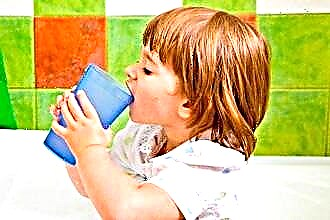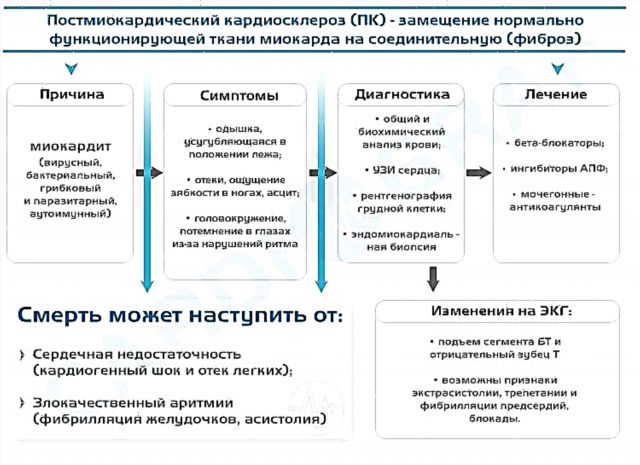Pharyngitis is an inflammatory process that affects the mucous and lymphoid tissues of the pharynx. This disease is often diagnosed in childhood and usually does not pose a serious health threat. Treatment of pharyngitis in children is based on therapy aimed at strengthening the general and local protective functions of the body, as well as reducing the severity of the accompanying symptoms of the disease. The disease in childhood most often occurs as a result of hypothermia or under the influence of pathogenic microorganisms.
Causes and symptoms
Sore throat can be infectious and non-infectious.
 If the disease is of an infectious nature, then most often it occurs under the influence of viruses (influenza, parainfluenza, herpes) or bacteria (staphylococcus, pneumococcus). Diseases of the oral cavity, such as caries, stomatitis, adenoids, also often cause inflammation in children.
If the disease is of an infectious nature, then most often it occurs under the influence of viruses (influenza, parainfluenza, herpes) or bacteria (staphylococcus, pneumococcus). Diseases of the oral cavity, such as caries, stomatitis, adenoids, also often cause inflammation in children.- Non-infectious reasons include burns and other injuries to the mucous membrane and tissues of the nasopharynx, prolonged stay in a room with dry or heavily polluted air, allergies to dust, pollen, and strong odors.
Among the main symptoms accompanying the disease in childhood, the following are distinguished:
- burning, feeling of a foreign object in the throat;
- swelling of the throat and back of the palate;
- an increase in the upper cervical lymph nodes;
- rhinitis;
- hoarseness, perspiration;
- increased body temperature;
- dry cough;
- fatigue, loss of appetite.
Intoxication of the body with pharyngitis is usually not significant, therefore, children over six years old who have previously met with a similar infection tolerate the disease more easily than infants, for whom there is a high likelihood of complications.
If pharyngitis occurs in children, and treatment was not started in a timely manner, then there is a risk of complications and the transition of the disease to a chronic stage, which is characterized by the following symptoms:
- the appearance of a viscous secretion in the nasopharynx;
- constantly sore throat;
- the occurrence of periodic dryness and burning in the nasopharynx;
- frequent relapses of the disease under the influence of adverse factors.
Important! If pharyngitis in a child is not treated, complications may arise in the form of bronchitis, otitis media, adenoids and other serious diseases.
Treatment
Most often, for the correct diagnosis, the pediatrician only needs to conduct an examination and analyze the complaints. However, sometimes, to confirm the diagnosis, to determine the type of pathogenic microorganism that caused the disease, it is necessary to additionally donate blood and urine, a throat swab for bacterial culture. Depending on the causes of the disease, the pediatrician chooses the way how to treat pharyngitis in children.

- If the viral cause of pharyngitis is determined, the inflammation is treated with antiviral drugs allowed for children (interferon drugs, Arbidol, Remantadin, Anaferon).
- If in the process of the disease a bacterial infection has joined, then further therapy of pharyngitis should be carried out with the use of antibiotics (Sumamed, Augmentin).
- To reduce pain in the nasopharynx, use special antiseptic sprays, tablets, lozenges (Chlorophyllipt, Miramistin, Ingalipt, Tantum Verde, Lizobakt, Septefril).
- Local antibacterial preparations in the form of sprays (Bioparox, Hexasprey) are also effective.
Important! Most throat antiseptics in the form of sprays are contraindicated before the age of three, as their use can provoke nausea or a lump in the throat.
- If the temperature rises above 38 degrees, then it is necessary to use antipyretic drugs (Paracetamol, Ibuprofen in accordance with age dosages).
- Drinking a sufficient amount of liquid allows you to moisturize the nasopharyngeal mucosa and reduce the level of intoxication. To do this, use compotes, teas with medicinal herbs (chamomile, sage), fruit drinks, ordinary boiled water. It is important that the liquid is not too hot, cold, sour freshly squeezed juices (orange), lemon should also be excluded.
- A sparing diet is also shown: you should offer the child soft mushy food, mashed vegetable puree, chopped soup, broth. Spicy, salty, smoked food is contraindicated. It is also necessary to exclude cold and hot food and drinks.
- Observe the optimal climatic conditions in the room where the child is. The air temperature should not exceed twenty degrees, humidity should be maintained at 50-70%. You can achieve the desired indicators by airing the room, frequent wet cleaning, using a humidifier.
Important! Experts do not recommend using more than three medications at the same time to treat throat.
An excess of drugs often causes the development of dysbiosis in the oral cavity and an increase in the number of dangerous bacteria.
Rinsing
Gargling is an effective means of eliminating infections in the nasopharynx; this procedure is also useful in the complex therapy of pharyngitis. As medicinal solutions, you can use:
- Decoctions of herbs such as chamomile, sage, plantain, calendula, elecampane. To prepare the product, twenty grams of dry matter is poured with a glass of boiling water, insisted, filtered and used for rinsing several times a day until the symptoms disappear completely.
- Saline and baking soda with added iodine is also a good sore throat remedy. It is not difficult to prepare such a remedy: for a liter of drinking water, take five grams of salt, soda and two drops of iodine. All components are mixed well and the procedure is carried out.
Important! For children, it is necessary to use drugs containing iodine with caution, as such drugs can have a negative effect on the functioning of the thyroid gland.
When rinsing, the following rules should be observed:
 you can repeat the procedure up to six to seven times a day;
you can repeat the procedure up to six to seven times a day;- one procedure should last at least ten minutes;
- about 200 ml of solution is used at a time;
- for better washing of the throat with a solution, it is necessary to throw your head back and pronounce the sound "y";
- the solution collected in the mouth must be completely spit out;
- intensive rinsing due to the ingress of the solution into the ear canal, can cause the development of otitis media;
- rinsing should be carried out no earlier than sixty minutes after a meal, and also not to eat within thirty minutes after the procedure.
If the child does not know how to gargle or is afraid of this procedure, then pediatricians recommend irrigating the throat with these solutions using a spray bottle or instilling a saline solution into the nasal passages.
Traditional methods of treatment
Subject to the general recommendations: drinking a sufficient amount of liquid, maintaining an optimal level of humidity and temperature in the room, as well as with the correct diet in the treatment of uncomplicated pharyngitis, it is enough to use traditional medicine methods.
- Beetroot juice can be used as an effective gargle and as nasal drops. To do this, wash the vegetable, peel it, grate it and squeeze the juice. You can store the resulting product for no more than a day in the refrigerator.
- Propolis is a powerful natural antiseptic. This tool is used as a disinfectant for various diseases of the nasopharynx organs.Propolis solution can be used both for rinsing and as a means for irrigating the pharynx. Small children can be offered to chew a piece of propolis as a treat, or moisten a piece of refined sugar with a solution.
- Essential oils (eucalyptus, tea tree, fir, sea buckthorn, peach) are used for instillation into the nose. These products have a long-lasting moisturizing effect on the nasopharyngeal mucosa, allowing you to prevent drying out during an extended night's sleep.
- A glass of warm milk with a teaspoon of honey helps moisturize the mucous throat, soften dry cough.
- Inhalation over warm steam with the use of herbal infusions, essential oils, alkaline water, have an antiseptic effect, help moisturize the mucous membrane, and eliminate pain.
Important! Before using essential oils and bee products for treating a child, make sure that there are no allergic reactions.

 If the disease is of an infectious nature, then most often it occurs under the influence of viruses (influenza, parainfluenza, herpes) or bacteria (staphylococcus, pneumococcus). Diseases of the oral cavity, such as caries, stomatitis, adenoids, also often cause inflammation in children.
If the disease is of an infectious nature, then most often it occurs under the influence of viruses (influenza, parainfluenza, herpes) or bacteria (staphylococcus, pneumococcus). Diseases of the oral cavity, such as caries, stomatitis, adenoids, also often cause inflammation in children. you can repeat the procedure up to six to seven times a day;
you can repeat the procedure up to six to seven times a day;

